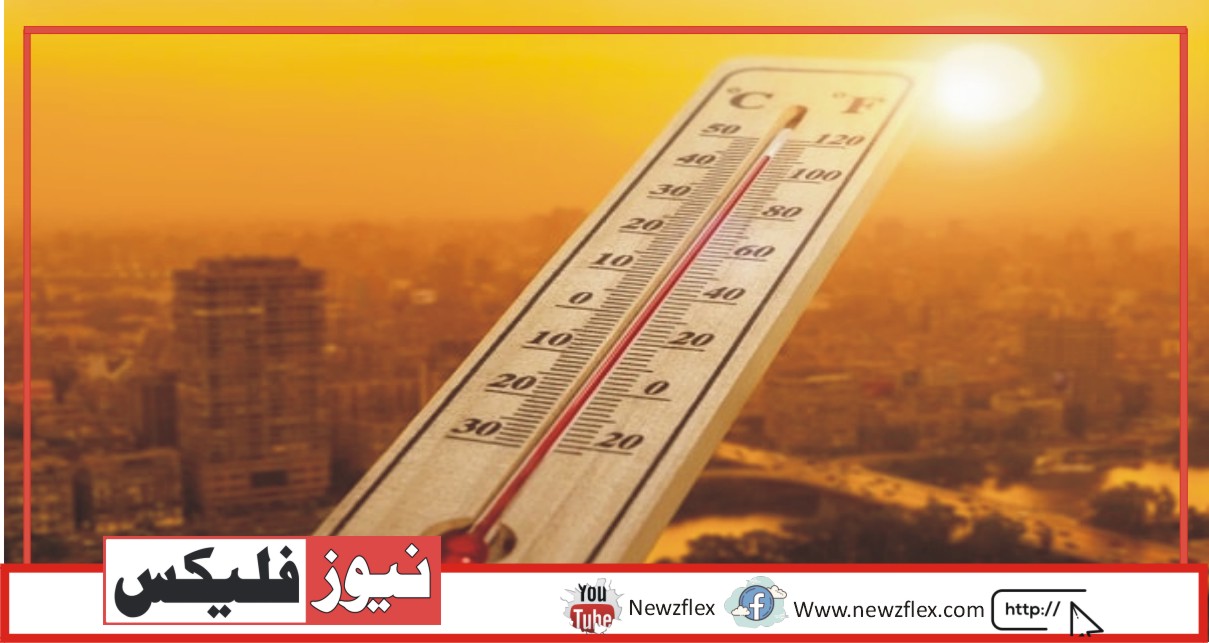
Top 10 Hottest Cities in the World
Global Warming is affecting badly the climate that raises the highest temperature. There are many hottest cities in the world. Also, you can find the hottest cities in Pakistan. It means that global Warming is not only affecting the temperature in Pakistani cities. But a rise in temperature in hot cities of the world is found.
If you are looking for the top 10 hottest cities in the world, then you are on the right page; remain conducted to know the details about it.
Hottest Cities in the World
There are many places on the earth where extreme temperature is observed. Some of the hottest cities in the world are given below.
The hottest cities in the world vary depending on the time of year and can fluctuate from year to year. However, based on average annual temperatures, here are the top 10 hottest cities in the world:
1. Timbuktu, Mali –
Timbuktu is a city in Mali, located in the northern part of the country, on the southern edge of the Sahara Desert. It is a historic trading center and an important cultural and intellectual hub in West Africa.
With an average annual temperature of 84°F (29°C), Timbuktu is considered one of the hottest cities in the world.
The city has a rich history dating back to the 11th century when it was founded as a trading post for salt and gold. Over the centuries, it grew in wealth and influence, becoming a center of Islamic scholarship, with numerous madrassas (Islamic schools) and libraries. Timbuktu was also a center of the trans-Saharan trade, with merchants from North Africa, Europe, and the Middle East coming to buy and sell goods.
In the 16th century, the city was captured by the Songhai Empire, which made Timbuktu its capital. However, the city declined in importance after the fall of the Songhai Empire and the disruption of the trans-Saharan trade routes. In the 19th century, it became part of French Sudan (later Mali) and was largely forgotten by the rest of the world.
In recent years, Timbuktu has gained attention for its cultural and architectural heritage. Many of the city’s historic buildings and monuments, including mosques, madrassas, and libraries, have been designated as UNESCO World Heritage sites. However, the city has also suffered from instability and conflict, including a period of occupation by Islamic extremists in 2012.
2. Dallol, Ethiopia –
Dallol is a small settlement located in the Danakil Depression in Ethiopia, which is known for being one of the hottest and most inhospitable places on Earth. It is situated at an altitude of about 130 meters (430 feet) below sea level, and temperatures in the area can reach up to 50°C (122°F) during the day.
Despite the harsh conditions, Dallol is famous for its otherworldly landscapes, which are characterized by brightly colored hot springs, geysers, and salt formations. The area is also home to several active volcanoes, including the Dallol Volcano, which last erupted in 1926.
This small town in the Danakil Depression has an average annual temperature of 94°F (34°C), making it one of the hottest inhabited places on Earth.
Dallol is located in the Afar Region of Ethiopia, and the surrounding area is home to several ethnic groups, including the Afar people, who are known for their resilience in the face of challenging conditions. The region is also home to a number of unique animal and plant species that have adapted to the harsh desert environment.
Due to its extreme temperatures and difficult access, Dallol is not a popular tourist destination, but it is visited by scientists and adventurers who are interested in studying its unique geology and biology.
3. Bandar-e Mahshahr, Iran –
Bandar-e Mahshahr is a port city located in the southwestern part of Iran, along the Persian Gulf. It is the capital of Mahshahr County and is situated about 70 kilometers (43 miles) south of the city of Ahvaz.
The city is an important hub for Iran’s petrochemical industry and is home to one of the country’s largest petrochemical complexes. It is also a major center for Iran’s oil and gas industry, with several refineries and oil terminals located in the area.
Bandar-e Mahshahr has a hot and humid climate, with temperatures regularly reaching over 40°C (104°F) during the summer months. The city is known for its beautiful beaches and is a popular destination for tourists, particularly during the summer season.
With an average annual temperature of 86°F (30°C), this city in Iran has recorded some of the highest heat index values in the world.
In addition to its industrial and tourism sectors, Bandar-e Mahshahr also has a rich cultural heritage. The city is home to several historic sites and museums, including the Jameh Mosque, which is one of the oldest mosques in Iran, dating back to the 7th century. The city also has a vibrant arts and music scene, with several festivals and events held throughout the year.
4. Baghdad, Iraq –
Baghdad is the capital and largest city of Iraq, located in the central part of the country, on the banks of the Tigris River. It has a rich and ancient history, dating back over 1,000 years.
Baghdad was founded in the 8th century AD by the Abbasid Caliphate, and it quickly became one of the most important cultural and commercial centers in the Islamic world. During the medieval period, Baghdad was renowned for its scholarship and intellectual achievements, with many famous writers, scientists, and philosophers making their homes there.
With an average annual temperature of 81°F (27°C), Baghdad is known for its scorching hot summers, with temperatures often exceeding 100°F (38°C).
In modern times, Baghdad has been affected by a series of conflicts, including the Iran-Iraq War, the Gulf War, and the Iraq War. These conflicts have resulted in significant damage to the city’s infrastructure and cultural heritage.
Despite the challenges, Baghdad remains an important center of Iraqi culture and commerce. It is home to numerous museums, including the Iraqi Museum, which houses artifacts from ancient Mesopotamia, and the Museum of Modern Art, which features works by Iraqi artists. The city is also home to several universities and research centers and is known for its vibrant marketplaces and bustling street life.
5. Riyadh, Saudi Arabia –
Riyadh is the capital and largest city of Saudi Arabia, located in the central region of the country. It is a modern and cosmopolitan city, with a population of over 7 million people.
Riyadh is the political, financial, and administrative center of Saudi Arabia, and it is home to many of the country’s government institutions, including the royal court and various ministries. It is also a major commercial and economic hub, with a thriving business sector and a rapidly growing economy.
The city has a hot and arid climate, with temperatures regularly reaching over 40°C (104°F) during the summer months. Despite the harsh climate, Riyadh has a number of green spaces and parks, including King Abdullah Park, which is one of the largest urban parks in the world.
Riyadh is also home to several museums and cultural institutions, including the National Museum of Saudi Arabia, which showcases the history and culture of the country. The city is known for its modern architecture, including the Kingdom Centre, which is one of the tallest buildings in the country, and the iconic Al Faisaliah Tower, which is home to a luxury shopping mall and hotel.
In recent years, Riyadh has undergone significant development and modernization, with new infrastructure projects and cultural initiatives aimed at enhancing the quality of life for residents and visitors alike.
With an average annual temperature of 86°F (30°C), Riyadh is known for its extremely hot and dry weather.
6. Phalodi, India –
Phalodi is a small city located in the Jodhpur district of Rajasthan, India. It is situated on the edge of the Thar Desert and is known for its hot and arid climate, with temperatures regularly reaching over 45°C (113°F) during the summer months.
Despite the challenging conditions, Phalodi is an important center for agriculture and animal husbandry and is known for its production of cotton, mustard, and other crops. The city is also famous for its cattle fair, which is held every year in September and attracts thousands of farmers and traders from across the region.
Phalodi is home to several historic sites and landmarks, including the Phalodi Fort, which was built in the 18th century and is known for its beautiful architecture and intricate carvings. The city is also home to several temples and shrines, including the Shri Laxminath Temple, which is one of the most important pilgrimage sites in the region.
In addition to its cultural and agricultural heritage, Phalodi is also a popular destination for tourists interested in exploring the Thar Desert and experiencing traditional Rajasthani culture. The city is known for its vibrant festivals and fairs, including the Marwar Festival, which celebrates the music, dance, and cuisine of the region.
This city in Rajasthan has an average annual temperature of 91°F (33°C) and is known for its blisteringly hot summers.
7. Jacobabad, Pakistan –
Jacobabad is a city located in the northern part of Sindh province in Pakistan. It is situated on the banks of the Indus River and is known for its hot and dry climate, with temperatures regularly reaching over 45°C (113°F) during the summer months.
With an average annual temperature of 87°F (31°C), Jacobabad is known for its intense heat and high humidity.
Despite the challenging climate, Jacobabad is an important center for agriculture and is known for its production of cotton, wheat, and other crops. The city is also home to several historic landmarks and cultural institutions, including the Jacobabad Fort, which was built by the British in the 19th century and is now a protected archaeological site.
Jacobabad is a diverse and multicultural city, with a mix of Sindhi, Balochi, and Punjabi communities living in the area. The city has a vibrant market culture, with several bazaars and shopping districts selling everything from traditional handicrafts to modern electronics.
In recent years, Jacobabad has become an important hub for energy production, with several power plants and oil refineries located in the area. The city is also a major transportation hub, with several highways and rail lines passing through the region and connecting it to other parts of Pakistan and neighboring countries.
Despite its challenges, Jacobabad is a city with a rich cultural heritage and a strong sense of community, and it continues to be an important center for trade, commerce, and agriculture in the region.
8. Matam, Senegal –
Matam is a city located in the northernmost region of Senegal, near the border with Mauritania. It is known for its Sahelian climate, with hot temperatures and low rainfall.
Matam is an important center for agriculture and animal husbandry and is known for its production of millet, sorghum, and livestock. The city is also home to several markets and trading posts, where local farmers and traders sell their goods.
This city has an average annual temperature of 87°F (31°C) and is known for its hot and dry weather.
Matam is a culturally rich city, with a mix of ethnic groups living in the area, including Fulani, Toucouleur, and Wolof. The city is home to several historic landmarks and cultural institutions, including the Djoudj National Bird Sanctuary, which is a UNESCO World Heritage Site and home to over 1.5 million migratory birds.
In addition to its cultural and natural heritage, Matam is also an important transportation hub, with several highways and roads passing through the city and connecting it to other parts of Senegal and neighboring countries. The city is also home to several schools and universities, including the University of Matam, which is one of the leading institutions of higher education in the region.
Despite the challenges posed by its arid climate and remote location, Matam is a vibrant and thriving city with a rich cultural heritage and a strong sense of community.
9. Jazan, Saudi Arabia –
Jazan is a city located in the southwest region of Saudi Arabia, near the border with Yemen. It is known for its warm climate, beautiful beaches, and mountainous landscapes.
Jazan is an important center for agriculture and is known for its production of crops such as coffee, fruits, and vegetables. The city is also home to several fisheries, which provide a significant source of income for local fishermen.
With an average annual temperature of 86°F (30°C), Jazan is known for its hot and humid weather.
In recent years, Jazan has experienced significant economic growth, thanks in part to the development of several industrial and commercial projects, including a major seaport and an international airport. The city is also home to several oil refineries and petrochemical plants, which have helped to make it an important hub for energy production.
Jazan is a culturally diverse city, with a mix of ethnic groups living in the area, including Arab, African, and South Asian communities. The city is home to several historic landmarks and cultural institutions, including the Jazan Castle, which is a popular tourist attraction and an important symbol of the city’s rich cultural heritage.
Despite its challenges, including occasional political instability and security concerns related to its proximity to Yemen, Jazan is a city with a growing economy and a rich cultural heritage, and it continues to be an important center for trade, commerce, and industry in the region.
10. Khartoum, Sudan –
Khartoum is the capital city of Sudan, located at the confluence of the White Nile and Blue Nile rivers. It is the political, cultural, and economic center of the country and one of the largest cities in Africa.
Khartoum has a rich history and cultural heritage, with a mix of ethnic groups and religions living in the area, including Arab, African, and Nubian communities. The city is home to several museums, art galleries, and cultural institutions, including the Sudan National Museum, which houses an impressive collection of archaeological artifacts and cultural treasures.
Khartoum is an important commercial and transportation hub, with several highways and railways passing through the city and connecting it to other parts of Sudan and neighboring countries. The city is also home to several ports and airports, including the Khartoum International Airport, which is one of the busiest airports in Africa.
With an average annual temperature of 84°F (29°C), Khartoum is known for its extremely hot summers, with temperatures often exceeding 100°F (38°C).
In recent years, Khartoum has undergone significant development and modernization, with the construction of new buildings, shopping centers, and hotels. However, the city continues to face significant challenges, including poverty, political instability, and environmental degradation.
Despite its challenges, Khartoum remains a vibrant and culturally rich city, with a diverse population and a strong sense of community. The city is known for its lively markets, music, and arts scene, and is a popular destination for tourists interested in exploring Sudan’s history and culture.








